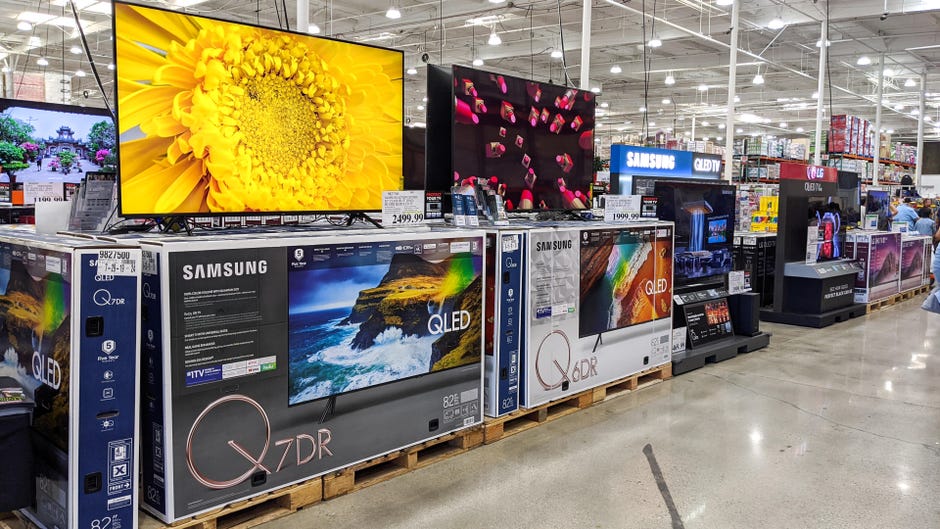
Gone are the days of sitting around a big black box of a TV as the entire family tuned in to watch the only channel available. Also, gone are the days of cable and dish TV when you had to pay for every channel you wanted.
It’s time for Netflix and other on-demand streaming technologies that bring your favorite shows, movies and more in 4K quality. And that means you need a new TV to take advantage of all this hot and happening entertainment tech.
Let’s figure out how to buy the best TV for your money.
Technology To Consider When Buying A TV
From screen resolution to audio quality, each aspect of the TV design uses complex technology.
Following are 5 things you need to consider when making a TV purchase:
Display Type
The picture quality of moving objects on your screen is determined by the display type you use.
So, first evaluate between the two choices you have: LED and OLED. The former uses light-emitting diodes to light up your display, while the latter utilizes organic pixels that emit light when an electric current passes through them.
Their difference lies in the dynamic range they provide. Essentially, this means that you need to look out for contrasts in color. For example, a high dynamic range results in brighter whites and deeper blacks, ensuring natural picture quality.
OLED’s increasing production is replacing LED because it can turn each pixel on and off, which offers a contrast without the development of unnatural brightness.
Screen Resolution
For you to get the best quality pictures, your TV must be equipped with higher screen resolution. For this reason, you need more pixels.
The standard resolution for HD screens used to be 1080p but now, the increasing sales of 4K display is replacing them. The reason behind it is that the latter offers four times more pixels than an HD display.
This means better picture quality. And it enables you to sit closer to the screen without noticing pixelation.
Screen Size And Design
Your ideal screen size is dependent on the number of people in your family who watch TV at a given time. Additionally, you should consider where in your home you want to place your TV.
Once you have a rough estimate of the area, look at appropriate screen sizes. When doing this, assess the utility you will gain and the décor of the room you will place your TV in.
So, for example, if you have a small room, buying a 4K display is better because it allows you to sit at a distance of 1.5 times the screen’s height.
Moreover, you should examine the TV’s invisible technology if you want it to blend into the décor of your room. For example, folding televisions remove the jarring black, unattractive screen after you are done using it.
Connectivity Options
As you can always add upgrades and plug-ins to your television, make sure it has many ports. So, suppose you want to add a game console, Chromecast, or a soundbar. If you have enough HDMI inputs, you can easily use these add-ins with your current TV instead of buying a new one.
Additionally, ensure that all ports support HDMI 2.0. If they do, you can add ultra HD sources in the future.
Sound
Satisfactory audio quality is paramount for a good TV experience. So, when making your purchase, test the sound of the TV.
You can do this by playing some loud action scenes to see whether the sound gets distorted at high volumes or not.
Ultimately, go for higher wattage because that ensures more sound output.
In Conclusion
Assessing the technology used in a TV can help you determine its functionalities. Then, based on your priorities, you can buy a TV that will provide you with an immersive auto-visual experience.

